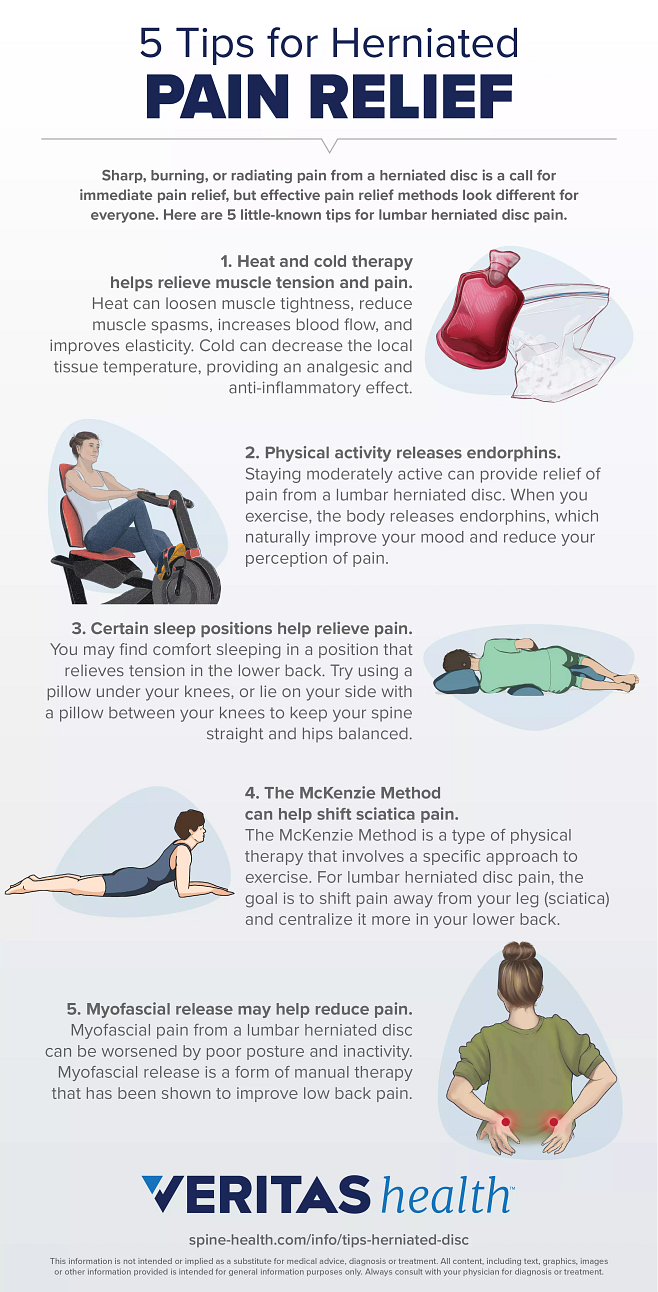Not known Factual Statements About Herniated Disc Treatment
Wiki Article
The Ultimate Guide To Herniated Disc Treatment
Table of ContentsHerniated Disc Treatment - TruthsGetting My Herniated Disc Treatment To Work10 Easy Facts About Herniated Disc Treatment ShownThe 7-Minute Rule for Herniated Disc TreatmentNot known Details About Herniated Disc Treatment What Does Herniated Disc Treatment Do?Top Guidelines Of Herniated Disc TreatmentWhat Does Herniated Disc Treatment Mean?
It may also be called a slipped or fractured disc. A herniated disc doesn't always create signs and symptoms. A herniated disc in the lower back is a common reason of back and leg discomfort.For a lot of people, symptoms get better over time, with or without therapy. This is typically done by eliminating disc product. There are different methods to eliminate disc product.
The Best Strategy To Use For Herniated Disc Treatment
This tiny item is called the lamina. It's the thin part of the vertebrae that forms a safety arch over the spine. A treatment called a laminotomy removes several of the lamina. A laminectomy eliminates a lot of or all of the lamina. It also may get rid of thick tissue that is narrowing the spine canal.Treatments other than surgery can frequently aid you feel much better, be extra energetic, and avoid surgical treatment. Numerous individuals are able to manage their signs with points like: Changing the way they do their activities.
Herniated Disc Treatment Fundamentals Explained
It helps you find out extending as well as stamina workouts that may decrease pain as well as other signs. The shots may reduce leg pain by reducing swelling in the nerve origin.And when they work, they only help relieve signs for a brief time. If one of these points doesn't function, you can try another thing or combine several of them. If you are obtaining better after at the very least 6 weeks of non-surgical therapy, that's a good sign that your body will certainly keep recovery without surgery.
Herniated Disc Treatment Can Be Fun For Anyone
This procedure is called traction. Surgery for a lumbar (reduced back) herniated disc jobs well for lots of people, but except every person. For some individuals, it can obtain rid of all or the majority of their signs and symptoms. In a research study of people that had sciatica triggered by a herniated disc, the chances of having no signs and symptoms or virtually no signs and symptoms 3 months to 2 years later was a bit higher with surgical treatment than with non-surgical therapy.In a study of people that had 6 to 12 weeks of extreme sciatica pertaining to a herniated disc, one team was appointed to have surgical procedure soon (the surgical procedure team). The other group (the non-surgical group) was appointed to attempt non-surgical therapies for 6 months, followed by surgical procedure if their signs didn't improve.
Not known Factual Statements About Herniated Disc Treatment
However after 1 year, both treatment teams rated their healing concerning the very same. If you don't choose surgical treatment now, you can alter your mind later if your symptoms have not improved or have worsened also with other therapies. Surgical treatment seems to work just as well if it's done within 6 months after your symptoms started.
The Definitive Guide to Herniated Disc Treatment

2. Generally, people ranked their recovery as 3. 1. At 1 year, Generally, individuals rated their recuperation as browse this site 1. Herniated Disc Treatment. 9. On average, people rated their healing as 2. 1. Instances of serious threats of surgical procedure for herniated disc Major threats? Wound issues, consisting of infection as well as hematoma (negative contusion)Much less than 1 to 2 out of 100 individuals that had surgical procedure had an infection or some other wound issue.
The Main Principles Of Herniated Disc Treatment
Surgery doesn't eliminate signs and symptoms, or new signs and symptoms happen, Concerning 4 to 10 out of 100 people who had surgical treatment took place to have another surgical procedure for a herniated disc. There is no top quality proof showing that surgical treatment is more handy than non-surgical therapy for a lumbar herniated disc., the possibilities of having no signs or almost no signs and symptoms 3 months to 2 years later on was a bit greater with surgical treatment than with non-surgical treatment.

Some Known Details About Herniated Disc Treatment
67 individuals out of 100 who had non-surgical treatment read had no signs or virtually no signs and symptoms. This indicates that 33 still had some signs. After 2 years:76 people out of 100 that had surgical procedure had no symptoms or virtually no symptoms (Herniated Disc Treatment). This indicates that 24 still had some signs and symptoms. 69 individuals out of 100 who had non-surgical treatment had no signs and symptoms or virtually no signs.The other team (the non-surgical group) was appointed to try non-surgical treatments for 6 months, complied with by surgery if their signs didn't improve. When inquired about their recovery 2 months after surgery or the beginning of non-surgical therapy, people in the surgery group felt better (closer to finish healing) than individuals in the non-surgical group.
Report this wiki page